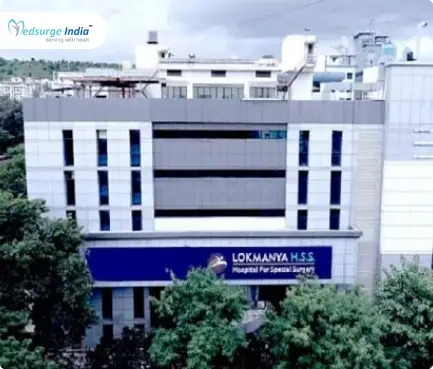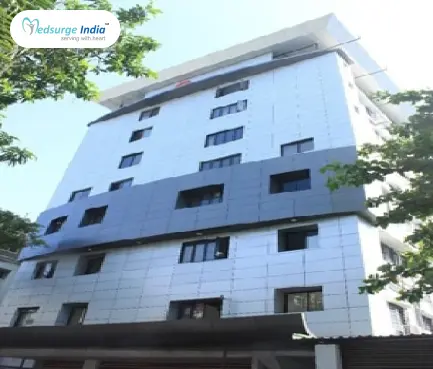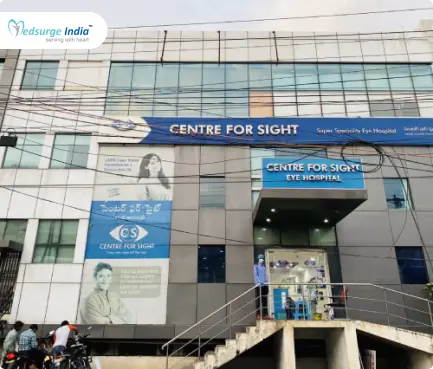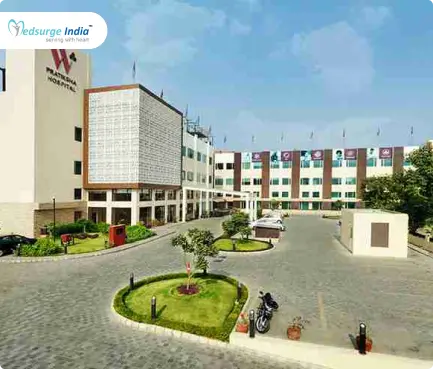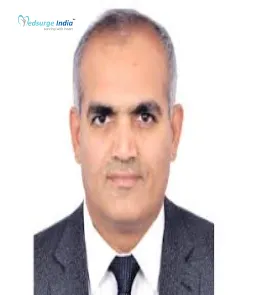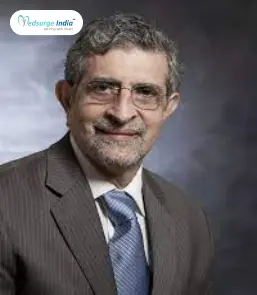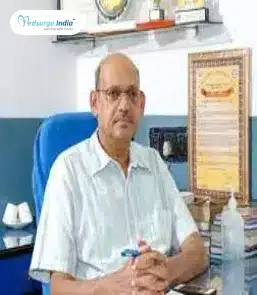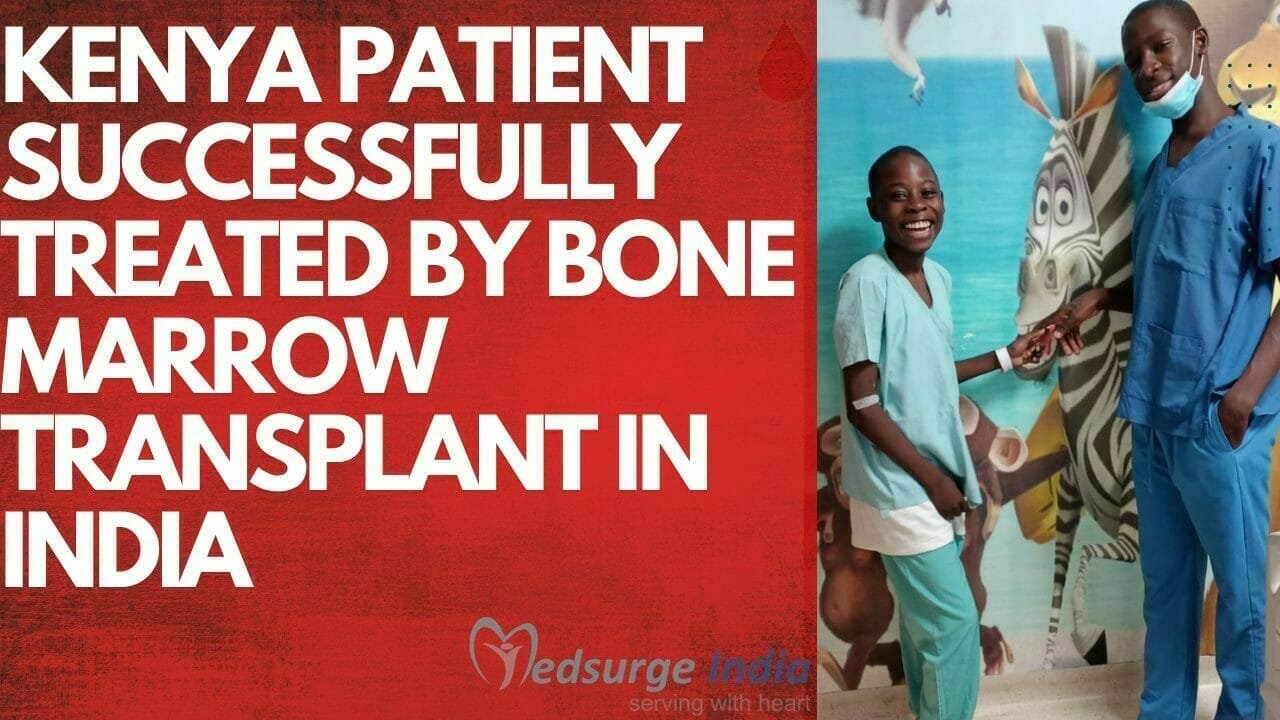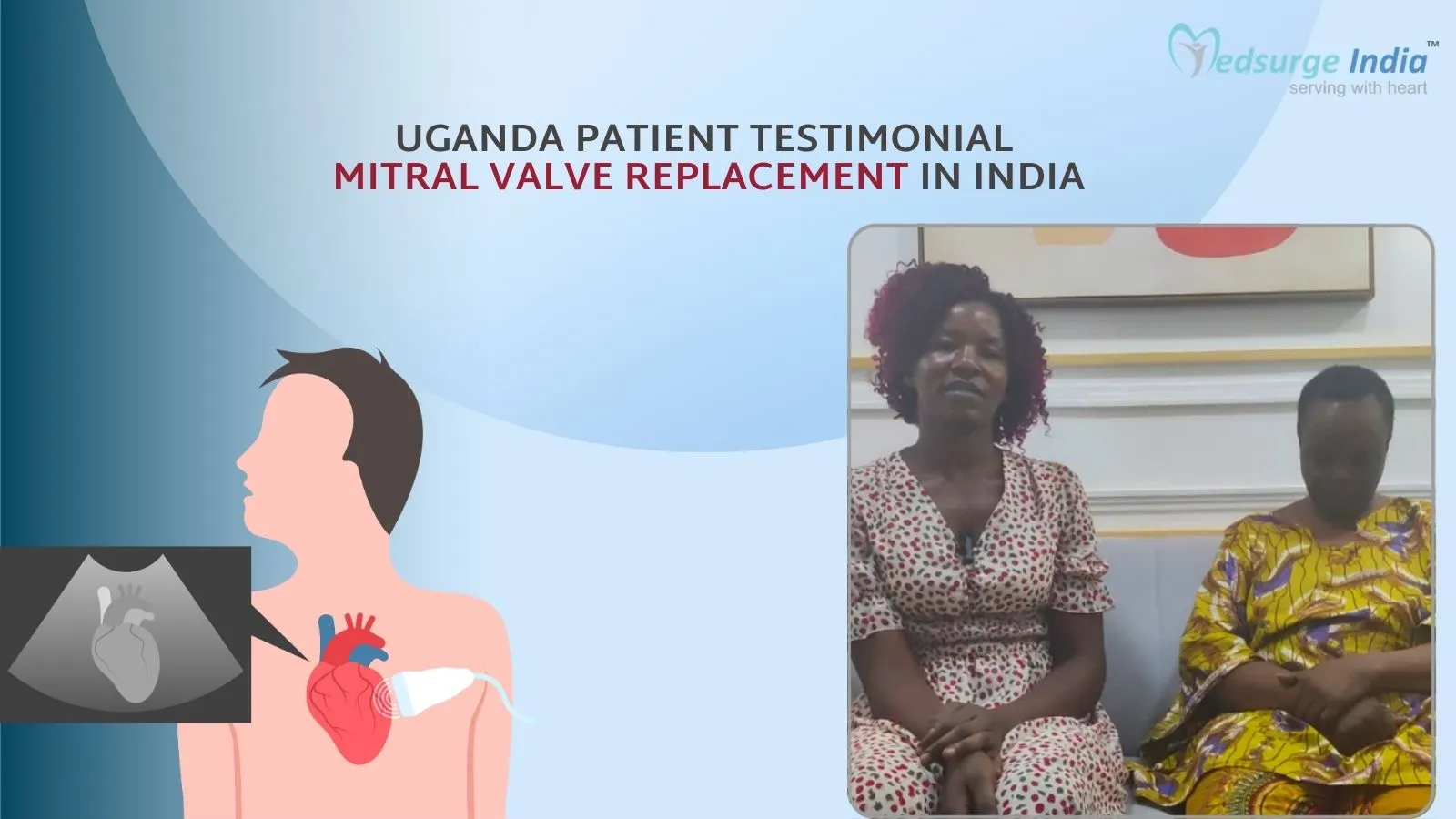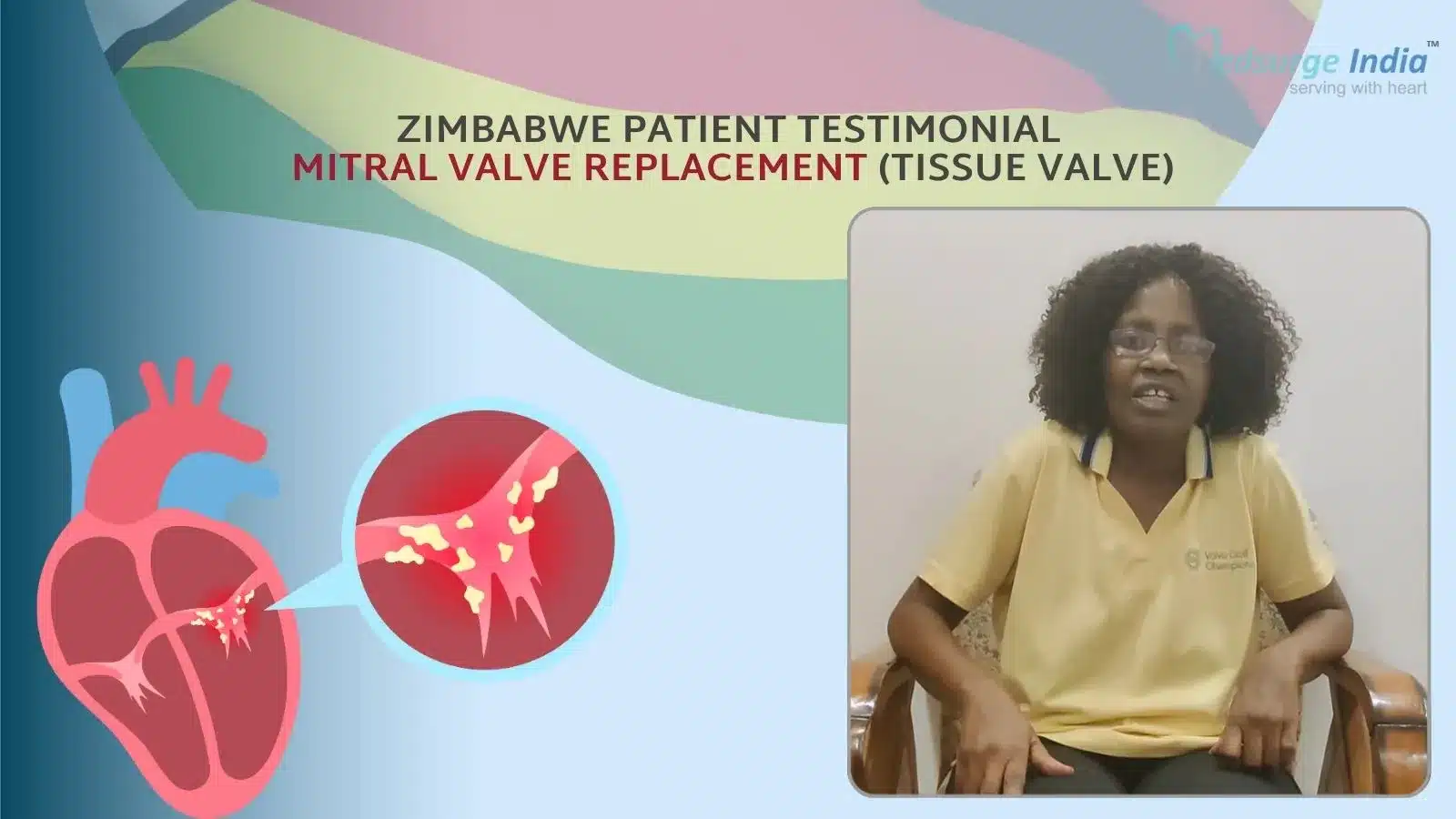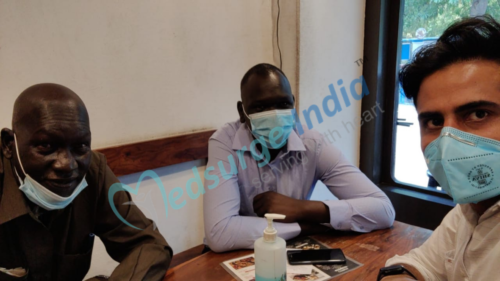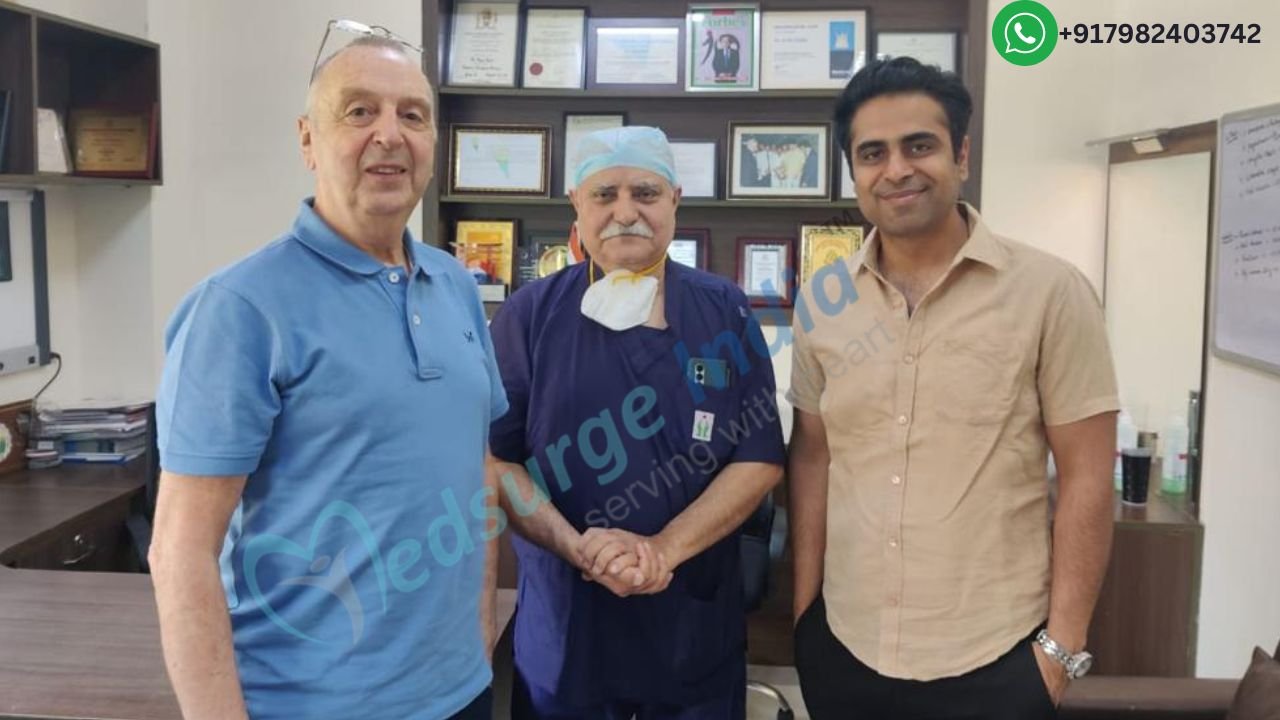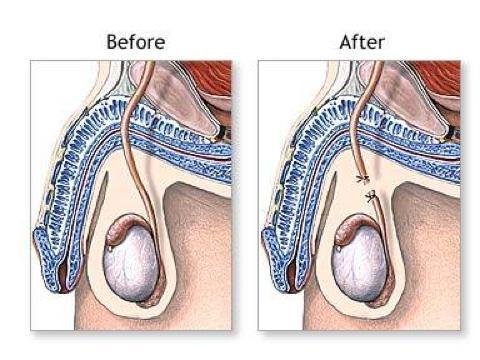
Vasectomy Surgery in India
A vasectomy is a surgical procedure used to sterilize men or provide them with long-term birth control. Any fully informed man who does not want to continue having babies should have this surgical procedure. Vasectomy surgery has a low risk of complications and is frequently done under local anesthesia in an outpatient setting.
During vasectomy surgery in India, urologists perform this procedure in less than 30 minutes. The male vasa deferentia are cut, tied, or sealed during the procedure to prevent sperm from entering the urethra and preventing the fertilization of a female through sexual activity.
Vasectomy surgery cost in India is relatively low. The diagnosis and the facilities that the patient selects determine the total cost of the treatment.
What is Vasectomy Surgery?
A vasectomy procedure is regarded as a permanent birth control method. It is a simple one-time process that is incredibly effective. In this procedure, each testicle’s vas deferens—the ducts that carry sperm—are cut, clamped, or sealed. The testicles continue to produce sperm after a vasectomy, but the body absorbs them. This will prevent the sperm from getting mixed with the semen that is ejaculated from the penis. The urologist performs a vasectomy on the scrotum. The main goal of the surgery is to stop the sperm and prevent the partner from becoming pregnant.
There are 2 types of vasectomy surgery in India and they are as follows:
- Conventional vasectomy using a knife [incision method]: To access the vas deferens during a conventional vasectomy, one or two small cuts are made in the scrotum’s skin. A small portion of the vas deferens may be cut out, leaving a thin space between the two ends. The urologist may then tie the cut ends of the vas or insert tissue between them before continuing. Then, through the original cut or a new one, these steps are repeated on the other vas. You have the option of using dissolvable stitches to close the scrotal cuts or letting them heal naturally.
- No-scalpel vasectomy [no-cut method]: The urologist feels for the vas beneath the scrotum’s skin during a no-scalpel vasectomy and secures it with a small clamp. To gently lift out the vas deferens, a tiny hole is made in the skin and stretched open. After that, it is cut, tied, seared, and reinserted.
Who is Eligible for Vasectomy Surgery?
In the following scenarios, a man would prefer to have a vasectomy surgery in India:
- If he intends to avoid having kids in the future
- If he is physically involved with a woman who has health issues, getting pregnant is unsafe for her.
- If both the partner does not wants to pass on a genetic disorder they both have
- If he and his partner don’t want to use other birth control methods
The following individuals should not go for vasectomy:
- In the event that someone has a groin hernia. Prior to performing a vasectomy surgery, a hernia must be treated.
- Infection of the skin in the scrotum
- If the surgical procedure is performed with the penis tip inflamed or swollen
- on each side, undescended testicles
Vasectomy Surgery Cost in India
On average Vasectomy Surgery Cost in India between Rs. 35,000 to Rs. 1,25,000 (420 USD to 1500 USD). For Vasectomy Surgery in India, the expenses are subject to variation based on the patient’s condition and the specific treatment approach chosen by the doctor following the results obtained.
Vasectomy Surgery Cost in Various Cities in India
| Cities | Starting Cost (USD) |
| Delhi | 400 USD |
| Gurgaon | 450 USD |
| Noida | 350 USD |
| Mumbai | 400 USD |
| Hyderabad | 350 USD |
| Chennai | 450 USD |
| Kolkata | 350 USD |
| Bangalore | 400 USD |
Please note that the pricing and the treatment for Vasectomy Surgery cost in India will vary depending on the patient’s choice and other various factors.
Factors That Can Affect Vasectomy Surgery Cost in India
The following here are some variables that can affect Vasectomy Surgery Cost in India:
- Medication costs.
- Duration of treatment.
- Geographical location.
- Hospitalization expenses.
- Government policies and subsidies.
- Medical tourism packages.
- Hospital reputation and infrastructure.
- The expertise and experience of medical professionals.
- The type and frequency of diagnostic procedures.
- The choice of treatment modality.
In addition, the quality and level of medical care and facilities offered are on par with renowned healthcare institutions worldwide, even after factoring in the costs of accommodation, meals, and transportation. Moreover, under the guidance of highly proficient doctors, Medsurge India ensures that patients receive the most affordable Vasectomy Surgery Cost in India.
Get Free Cost Estimation
Procedure
How Vasectomy Surgery Performed?
Before the Procedure
- To make sure it’s the best form of birth control for you, your doctor might ask you to attend counseling.
- If you need any additional birth control measures, speak with your doctor.
- The type of vasectomy that is suitable for you should be discussed with your doctor.
- You must be confident that you do not want to have children in the future or in any other way.
- You must understand that a vasectomy is permanent and placing it won’t necessarily be successful.
- If you are currently taking any blood-thinning medication or aspirin, you will be asked to stop taking it before your surgery.
- On the afternoon of the procedure, take a shower or a bath and make sure to thoroughly clean the genital area.
- To prevent discomfort after surgery, you might need to wear athletic supporters or tight-fitting pants.
During the Procedure
- The procedure will take between 10 and 30 minutes to complete.
- You’ll receive local anesthesia, which will numb the area around your genital area and prevent you from experiencing any pain while you’re still conscious.
- To locate the vas deferens tubes that remove your semen from the testicles, a very small incision will be made on the scrotum.
- If there is no scalpel used, a tiny puncture (hole) will be created as opposed to an incision.
- Most likely, cuts will be made to remove the vas deferens tubes from the scrotum.
- Every tube may occasionally have a very small portion cut on it.
- Following that, the tubes are linked, cauterized (using electric current), clipped, or a combination of these methods may be used to seal them.
- The scrotum has received the tubes back.
- A puncture doesn’t require stitching and will eventually heal on its own.
After the Procedure
- You might feel some minor discomfort, swelling, or pain for a few days.
- You might want to wear form-fitting underwear for about 48 hours, then change it regularly.
- You might also want to apply ice packs to your scrotum for about two days.
- After the procedure, you can only do limited exercise and rest for 24 hours because doing too much could cause pain or scrotal bleeding.
- After a week of abstinence, you can resume your sexual activities whenever it feels right.
- Given that it takes time for your remaining sperm from the tubes to clear out, you might need to use contraception at least until you are 8 to 12 weeks along.
- After a vasectomy, it’s normal to have blood in your semen.
- You will be asked to provide a sample of your semen approximately 12 weeks after the operation in order to determine whether you are sperm-free or not.
You may also be interested in – Testicular Cancer Treatment Cost in India
What Person Should Expect After Having Vasectomy Surgery?
A vasectomy doesn’t offer immediate pregnancy prevention. Until your doctor says there is no sperm in your semen, use a different method of birth control. You must wait several months or longer and ejaculate 15 to 20 times or more to remove all sperm from your semen before engaging in unprotected sex.
Six to twelve weeks after surgery, most doctors perform a follow-up semen analysis to make sure there are no sperm still present. To examine your sperm, your doctor will need some samples from you. Your doctor will have you masturbate, ejaculate into a container, or use a special condom without lubricant or spermicide to collect semen during sexual activity in order to obtain a sperm sample. The presence of sperm is then determined by microscopically examining your semen.
What Are the Risks and Complications Associated with Vasectomy Surgery?
The possibility that you might later decide about having children is a possible issue with vasectomy. Vasectomy reversal may be possible, but there is no assurance it will be successful. In some instances, reversal surgery is ineffective and more difficult than vasectomy. It can also be expensive.
Following-surgery side effects may include:
- Bleeding or a hematoma (blood clot) in the scrotum
- Blood in your semen
- An injury to your scrotum
- Infection at the site of surgery
- Mild discomfort or pain
- Swelling
Delayed complications can include:
- 1% to 2% of patients who undergo surgery may develop chronic pain.
- Testicular fluid accumulation can result in a dull pain that gets worse with ejaculation.
- Inflammation brought on by sperm leakage (granuloma)
- During pregnancy, could perhaps your vasectomy fail, which is rare.
- The term “spermatocele” refers to an abnormal cyst that forms in the small, coil-shaped tube on the upper testicle that collects and transports sperm (epididymis)
- A testicle’s surrounding fluid-filled sac (hydrocele), enlarges the scrotum.
Suggestion
The use of condoms during sexual contact to prevent pregnancy in your partner is an alternative to having a vasectomy. In addition to this, you and your partner can agree that she should use birth control pills, a cervical cap, or a diaphragm to avoid an unintended pregnancy.
Vasectomy failure rates have been found to be extremely low. It is regarded as one of the most effective birth control methods. By chance, a second vasectomy might be necessary if sperm are discovered in your semen.
Top Urologists in India
The Most Important Frequently Asked Questions
Q: Is Vasectomy a Safe Procedure?
A: Vasectomy is secure, handy and nearly 100% successful for people who wish to utilize a male birth control process.
Q: How Long Will the Surgery Last?
A: It takes about 10 – 30 minutes.
Q: How Painful Will the Procedure Be?
A: You’ll be provided local anesthesia, which means that your scrotum area will be numb, and will not feel any pain during the operation. But you may encounter some moderate pain, distress, or swelling following surgery that can go away after a couple of days. Your physician may also prescribe some medication to relieve any pain.
Q: Will Vasectomy Affect My Sex Drive and Hormone Levels?
A: Vasectomy will not interfere with either your sex drive or hormones as your testicles will still produce the hormones. The only difference is that your semen will no longer carry sperm although your body still produces it.
Q: What Will Happen to the Sperms Still Produced by My Testicles?
A: They will be absorbed by your body and will not cause any harm.
Q: When Can I Be Active Again?
A: Although this is a short, outpatient procedure, it is suggested to take rest for at least a day and limit activities as too much too soon can cause pain and bleeding in the scrotum.
Q: When Can I Be Sexually Active Again?
A: You may need to wait for about a week to be sexually active again or until you are comfortable. You may initially experience some pain or blood in your semen if you do ejaculate.
Top Hospitals for Vasectomy Surgery in India
Top Doctors for Urology Treatment
Dr. Sarita Bhagwat
Senior Consultant
Experience: 25 years of experience
Fortis Hospital, Mulund, Mumbai
Mumbai, India
Dr. S K Pal
Consultant
Experience: 35 years of experience
Indraprastha Apollo Hospital New Delhi
New Delhi, India
Dr Shivraj Barath Kumar
Consultant
Experience: 13 years of experience
Apollo proton Cancer Centre, Chennai
Chennai, India
Dr. Vikas Jain
Senior Consultant
Experience: 9 years of experience
Fortis Hospital Delhi Shalimar Bagh
New Delhi, India
Dr. Arnab Krishna Deb
Senior Consultant
Experience: 33+ years of experience
Narayana Multispeciality Hospital, Andul Road, Howrah
Howrah, India
Dr. Jimmy shad
Consultant
Experience: 20 Years of Experience
Apollo Children Hospitals
Greams Road, Chennai
Dr. Deepak Dubey
Consultant
Experience: 23 years of experience
Manipal Hospital (Old Airport Road) Bangalore
Bangalore, India
Dr. Ajit Sawant
Consultant
Experience: 16 years of experience
Dr. L H Hiranandani Hospital, Mumbai
Mumbai, India
Dr. Seral Kannan
Consultant
Experience: 16 years of experience
SIMS Hospital, Vadapalani, Chennai
Chennai, India
Dr. Shanmugasundaram
Consultant
Experience: 22 years of experience
Kauvery Hospital Formely Fortis Hospital, Vadapalani
Chennai, India
Dr. Prasanna Kumar Mishra
Director
Experience: 31 years of experience
AMRI Hospital, Kolkata (Mukundapur)
Kolkata, India

